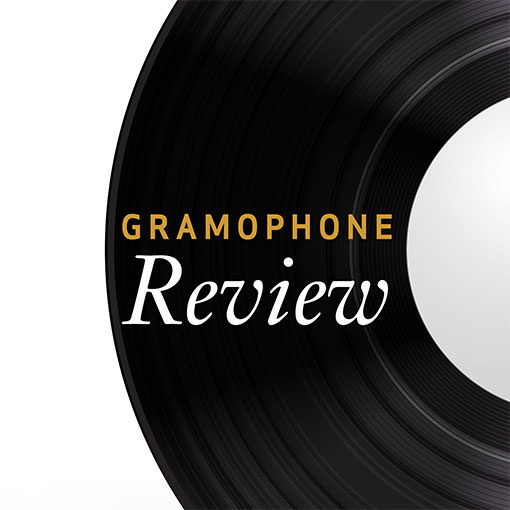Beethoven Masses
View record and artist detailsRecord and Artist Details
Composer or Director: Ludwig van Beethoven
Label: Duo
Magazine Review Date: 8/1993
Media Format: CD or Download
Media Runtime: 136
Mastering:
ADD
Catalogue Number: 438 362-2PM2

Tracks:
| Composition | Artist Credit |
|---|---|
| Mass in D, 'Missa Solemnis' |
Ludwig van Beethoven, Composer
Anna Tomowa-Sintow, Soprano Colin Davis, Conductor London Symphony Chorus (amateur) London Symphony Orchestra Ludwig van Beethoven, Composer Patricia Payne, Mezzo soprano Robert Lloyd, Bass Robert Tear, Tenor |
| Mass |
Ludwig van Beethoven, Composer
Christiane Eda-Pierre, Soprano Colin Davis, Conductor Kurt Moll, Bass London Symphony Chorus (amateur) London Symphony Orchestra Ludwig van Beethoven, Composer Patricia Payne, Mezzo soprano Robert Tear, Tenor |
Author:
''This, for a start, is a sensible coupling'', and that, for a start, is a sensible point. It was made by Trevor Harvey, opening his review of the original issue in 1978. He remarked on Beethoven's care over word-setting, a consideration of prime importance in the composition of both Masses. He also noted that the C major Mass, though ''nothing like as magnificent'' as the Missa solemnis, was unjustly neglected, and that in these recordings it had the benefit of a completely successful performance, the D major Mass rather less so.
All of this still holds. The C major, if not now quite neglected (it has ten recordings currently available, compared with the Missa solemnis's 21), is still felt to be something of a poor relation, and, as TH said, it doesn't confer prestige upon a choir in the way the other undoubtedly does. But what this coupling of the two Masses achieves is an increase in prestige for the earlier work. Listened to historically, as though from the far side, its blazing originality and inspiration make Prince Esterhazy's ''But my dear Beethoven, what is this you have done now?'' perfectly understandable. It is also true that it has the more completely satisfying performance. Yet the Missa solemnis is fine too, and is the sure recommendation for that work in preference to the 1975 mid-price EMI under Giulini, the only other version to be coupled with the C major.
One difference is clear from the start: Davis brings his players down with unanimity on the first chord and its later counterparts, whereas Giulini's sound like the old-style pianism of left-hand-before-right. At the start of the Gloria Giulini does indeed secure clarity, but by setting a rehearsal-tempo curbing the great rush of praise and then investing the ''pax hominibus'' with a sentimentality that would never be an indulgence of Davis's. But then (alas for the clearcut decision) Giulini's C major Mass is totally different: energetic, purposeful, alight with specific insight, and really rather overshadowing the very good Davis. Giulini's recording of the C major was made in 1970, and shows him as a conductor in a completely different light. On balance, I would still take the Davis coupling. In the Missa solemnis the main limitation is a want of tension in the Agnus Dei: throughout, this is a tremendously secure performance, but in the Missa solemnis you need some element of danger. It's still fine, and the C major (Giulini notwithstanding) is excellent, both as performance and recorded sound.'
All of this still holds. The C major, if not now quite neglected (it has ten recordings currently available, compared with the Missa solemnis's 21), is still felt to be something of a poor relation, and, as TH said, it doesn't confer prestige upon a choir in the way the other undoubtedly does. But what this coupling of the two Masses achieves is an increase in prestige for the earlier work. Listened to historically, as though from the far side, its blazing originality and inspiration make Prince Esterhazy's ''But my dear Beethoven, what is this you have done now?'' perfectly understandable. It is also true that it has the more completely satisfying performance. Yet the Missa solemnis is fine too, and is the sure recommendation for that work in preference to the 1975 mid-price EMI under Giulini, the only other version to be coupled with the C major.
One difference is clear from the start: Davis brings his players down with unanimity on the first chord and its later counterparts, whereas Giulini's sound like the old-style pianism of left-hand-before-right. At the start of the Gloria Giulini does indeed secure clarity, but by setting a rehearsal-tempo curbing the great rush of praise and then investing the ''pax hominibus'' with a sentimentality that would never be an indulgence of Davis's. But then (alas for the clearcut decision) Giulini's C major Mass is totally different: energetic, purposeful, alight with specific insight, and really rather overshadowing the very good Davis. Giulini's recording of the C major was made in 1970, and shows him as a conductor in a completely different light. On balance, I would still take the Davis coupling. In the Missa solemnis the main limitation is a want of tension in the Agnus Dei: throughout, this is a tremendously secure performance, but in the Missa solemnis you need some element of danger. It's still fine, and the C major (Giulini notwithstanding) is excellent, both as performance and recorded sound.'
Discover the world's largest classical music catalogue with Presto Music.

Gramophone Digital Club
- Digital Edition
- Digital Archive
- Reviews Database
- Full website access
From £8.75 / month
Subscribe
Gramophone Full Club
- Print Edition
- Digital Edition
- Digital Archive
- Reviews Database
- Full website access
From £11.00 / month
Subscribe
If you are a library, university or other organisation that would be interested in an institutional subscription to Gramophone please click here for further information.





